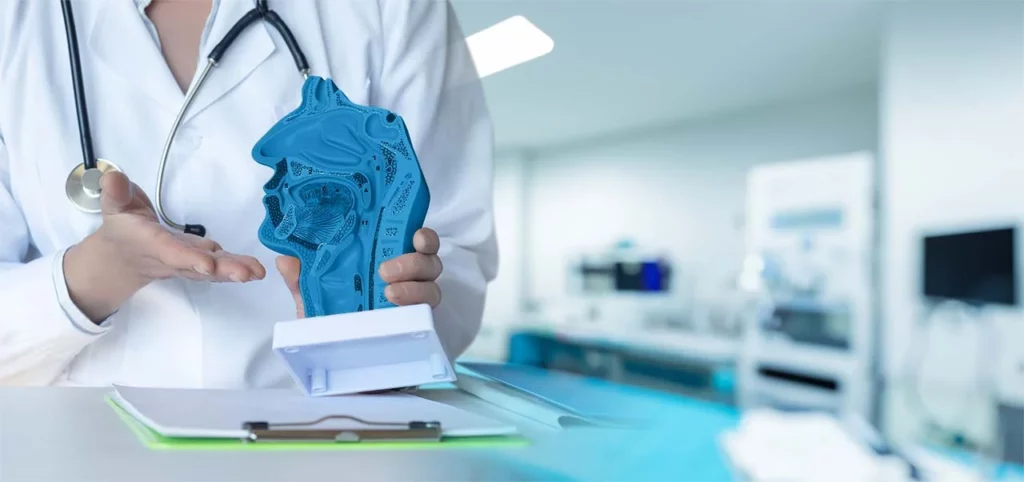To understand what a thoracic endoscopy is like, we must first understand what an endoscopy is. This procedure allows for the direct visualization of internal cavities and organs without the need for invasive surgery.
What Is an Endoscopy?
An endoscope—the device used for this procedure—is equipped with a camera that transmits real-time images to a monitor, allowing the physician to clearly view the area being examined. Additionally, in some cases, this device includes surgical instruments that allow for biopsies, tumor removal, or the extraction of foreign bodies, among others.
When referring specifically to a thoracic endoscopy, we are talking about a technique used to examine the thoracic cavity, including the lungs, the mediastinum (the area between the lungs where the heart, blood vessels, trachea, and esophagus are located), and other thoracic structures.
There are different types of thoracic endoscopy that enable detailed visualization of these areas, such as thoracoscopy and mediastinoscopy.
Thoracoscopy
Thoracoscopy, or video-assisted thoracoscopy (VATS), is a thoracic endoscopy procedure used to examine and, if necessary, perform surgery in the pleural cavity—the space between the lungs and the chest wall.
A thoracoscopy is performed through small incisions in the chest, through which the endoscope is inserted. It is used to diagnose or treat pulmonary diseases such as pleural effusions, collapsed lungs (pneumothorax), lung infections, pulmonary nodules, and pleural tumors. Biopsies may be taken if there are tumors in this area.
Thoracoscopy may also be used as a minimally invasive surgical technique, as an alternative to thoracotomy (which requires large incisions). Procedures that can be performed include the resection of small lung tumors, abscess drainage or infection control (such as decortication via thoracoscopy), and even the removal of a portion of a lung.
Mediastinoscopy
Mediastinoscopy is another variant of thoracic endoscopy that allows for the examination of the mediastinum. It is a key procedure for diagnosing and staging diseases that may affect not only the lungs but also the heart, esophagus, or trachea.
The procedure requires general anesthesia and is performed through a small incision at the base of the neck or the upper part of the sternum, where the mediastinoscope—a specially designed endoscopic instrument for the mediastinum—is inserted.
Mediastinoscopy is often used as a diagnostic tool, particularly in staging lung cancer by obtaining lymph node biopsies. It is also useful in diagnosing conditions such as sarcoidosis.
Thoracic endoscopy and its variants are procedures that allow for precise diagnosis, minimizing complications and offering less invasive solutions for conditions affecting the lungs and surrounding areas.
Thoracic Endoscopy Near Me
At ABC Medical Center, our thoracic endoscopy team comprises certified physicians with academically verified credentials, certifications, and extensive professional experience. Our facilities include a dedicated area for endoscopy and colonoscopy, equipped with state-of-the-art technology and prepared for any scenario.
We are committed to providing the best care for our thoracic endoscopy patients in Mexico City. We also implement measures to reduce infection risk, such as using automated endoscope reprocessors, which operate with high-level automated disinfection systems.
At the ABC Medical Center’s Endoscopy Service, we can provide you with specialized care. Contact us!
Fuentes:
Cancer.org, MSD Manuals, MedlinePlus



